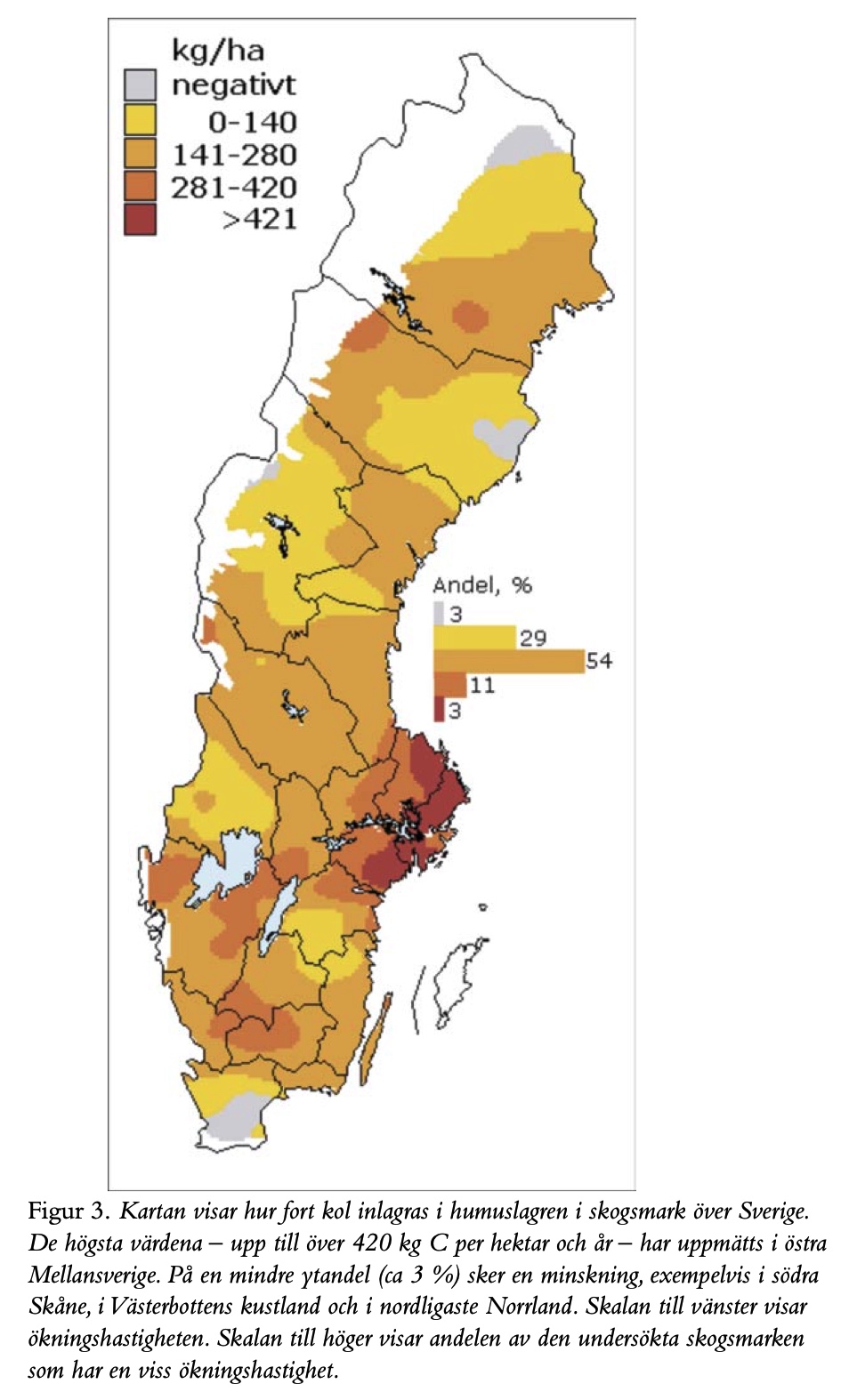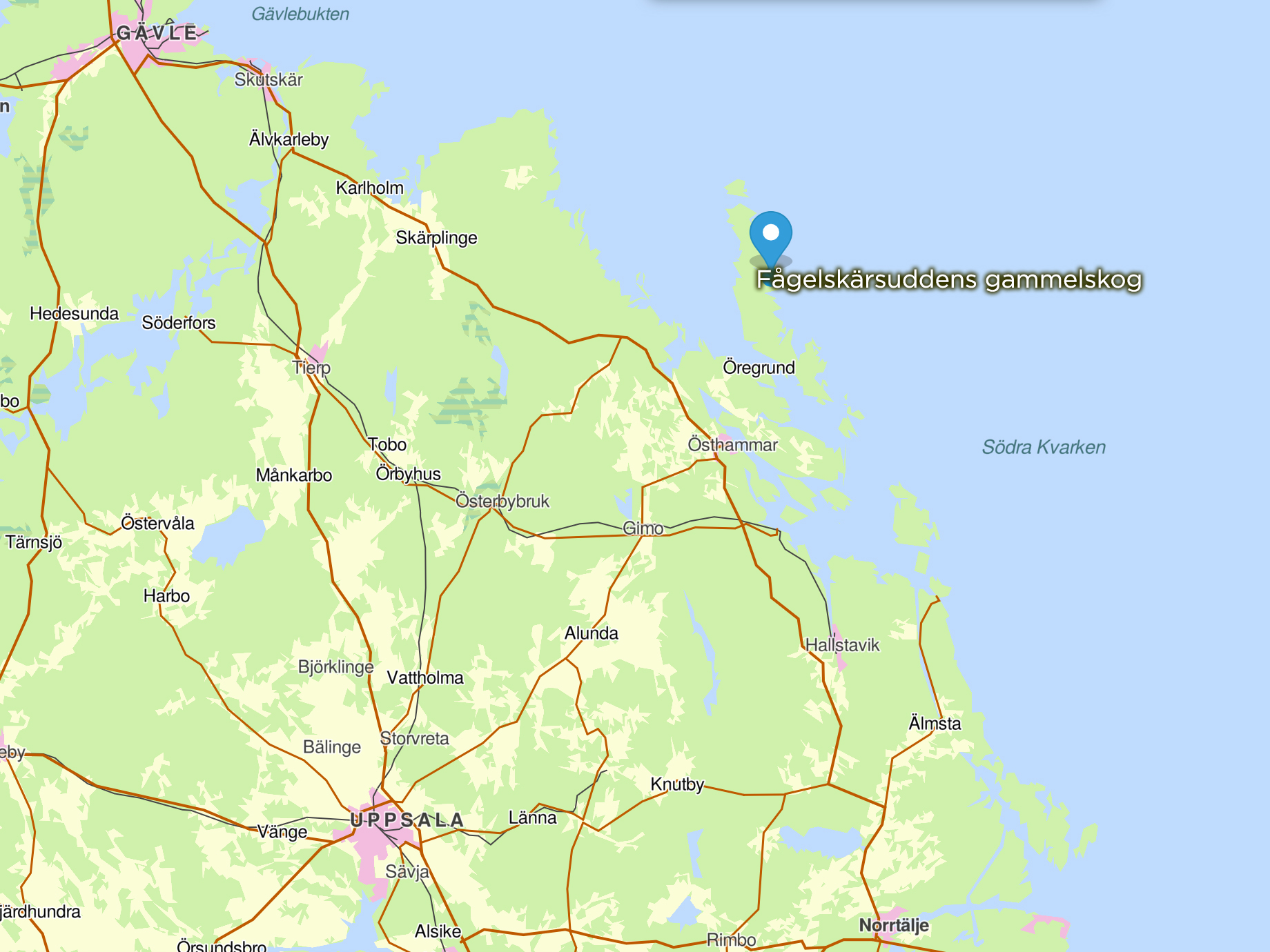Söderboda old-growth forest
Properties - (click here to show/hide)
Naturarvet acquired Svartsundets old-growth forest of 31 ha on Gräsö in the northern Roslagen archipelago in June 2020. In the spring of 2021, we began contacting neighbors to inquire about the possibility of acquiring additional land in the area. Being able to connect a larger, contiguous area on the headland outside Söderbodfjärden would provide even greater benefits for preserving biodiversity and creating a secure carbon sink for current and future generations.
Initially, our attempts to contact them were not very successful, but in the spring of 2022, we were first contacted by a neighbor who offered us the purchase of 44 ha of the cape towards Fågelskärsören in the southeast. Independent of the first contact, we were later contacted by a second neighbor, who had initially been skeptical but now changed his mind, and offered us the purchase of 11.5 ha that extends towards Bålgrundsfjärden in the northeast. We originally called this extension Fågelskärsuddens old-growth forest .
In the spring of 2023, we made contact with another property owner and were able to acquire an additional 23.5 ha. This means that our acquired areas in Söderboda on Gräsö extend from the lands west of Svartsundet , across the cape to the northeast shore and out to the southeast tip of the cape. We are humbly grateful that we have now, through all the donations collected and thanks to landowners who want to sell their land, been given the chance to acquire these four areas. Through property regulation, the contiguous area in Söderboda has been expanded from 32 ha to a total of 110 ha.
In 2024, collaboration with the County Administrative Board in Uppsala County led to an agreement on encroachment before a decision on a nature reserve, which will hopefully come in 2025. The forest in the entire area and has never been clear-cut or otherwise used with modern methods. There are traces of cultural impact through previous forest grazing, overgrown meadows and old log barns, which also contribute to biodiversity. The property regulation also determined the associated water outside the property's shoreline to 37 ha, which will partly be protected in the new nature reserve and partly is already protected through the Gräsö eastern archipelago marine reserve.
Nature - (click here to show/hide)
The entire area on the headland outside Söderbodfjärden has high natural values. Almost 100 conservation species, half of which are red-listed, have now been given a protected home in the previously culturally influenced wilderness. See some environmental pictures from our photo blog during our first visit here.
The large amount of dead wood, old trees and the mosaic of several different biotopes offer environments for a wide range of species. Particularly important environments include: 1. pine flatlands with a primeval forest character and associated woody insects, lichens and fungi; 2. swampy areas with mixed coniferous forest; 3. swamp forests (the north's own carbon-eating 'mangrove swamp'), which grow virgin on the soil of overgrown former sea bays.
The new areas also contain marshes and swamps that are home to several protected species. The mosaic of alternating rocky areas and wetter biotopes means that the land is not entirely easy to walk on in some parts, which has also contributed to a more protected environment for wildlife.
Here is a list of conservation species recorded so far:

Climate - (click here to show/hide)

An extra bonus with Söderboda old-growth forest is its location in eastern Svealand, where carbon sequestration in the soil is the highest in the country. In the alk bog we have a good idea of how much CO2 has been sequestered through tree growth over the last 60 years.
Forestry plans from the larger part of Fågelskärsudden and the one we received when we acquired Svartsundets old-growth forest gives a good picture of how much area is now preserved from felling and thinning and how much CO2 can be bound in the different parts of old-growth forest in the future.
To protect Söderboda old-growth forest and other similar old-growth forests is the most important action we can take to slow climate change with immediate effect
The collection
To the Fundraising page
In May 2020, the first area was acquired Svartsundets old-growth forest . In June 2022, contracts were signed and down payments were made for two land areas, and in March 2023 for a fourth. Through the collection to Svartsundets old-growth forest and a strong collection in 2021 and the first half of 2022, we had already collected a large part of the purchase price. The land survey where all acquired property parts were merged was completed in the fall of 2023. You can still earmark donations in the area and contribute to being able to acquire more old-growth forest :
How to get here - (click here to show/hide)
Soderboda old-growth forest is located on Gräsö, an island at the northern end of Roslagen in Uppsala County. You can get there by going to Öregrund and from there by regular free car ferry. Click here for the ferry timetable and other information . The easiest way to get to Fågelskärsudden is old-growth forest with your own vehicle. By public transport you can get from Uppsala Central Station by bus 811 ( click here for timetable ) to Öregrund and from there by bus 854 ( click here for timetable ) to Norrbacka crossroads on Gräsö which is located at these coordinates 60.44494, 18.40913 (bus 854 may need to be pre-ordered three hours before departure).
The journey from Norrbacka crossroads is on a single forest road of varying quality. The last stretch in particular is a very bumpy and rocky road that you travel on at your own risk for your means of transport/vehicle. If you are driving a car, you should preferably have four-wheel drive and high ground clearance for the last stretch. Otherwise, park at these WGS84 decimal coordinates 60.445574, 18.450383 at the latest. If you want to find a suitable place to pitch a tent for the night, you can enter these WGS84 decimal coordinates 60.431032, 18.461265 , from where the southeastern part with its fantastic rocky terrain and old pine trees is most easily reached via a forest road past a holiday home and then by following open or overgrown meadowland down to the southeast. If you instead follow the forest road further towards Bålgrundsfjärden, you will more easily get up onto the rocky ground in the center of the area and reach the path along the eastern edge of the marsh east of the rocky ground and further out through the wilderness towards the area's northeastern shore.
.
Click here for a fundraising map of the areas, where you can see which areas have already been sponsored through previous contributions to Svartsundets old-growth forest You can also see where the different forest squares and areas in Söderboda are. old-growth forest is located. The map will be updated continuously with more information.
